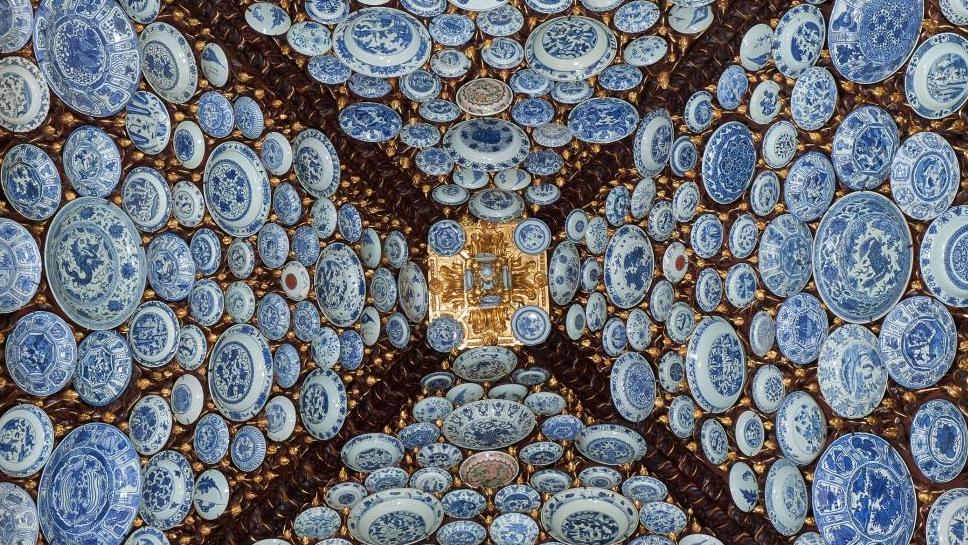The Porcelain Room of the Santos Palace in Lisbon is famous for its ceiling, laid out at the end of the 18th century with "blue and white" plates from China. The Musée Guimet is presenting a 3-D reconstruction.
Zenithal view of the ceiling in the Porcelain Room at the Santos Palace (now the French Embassy in Portugal), Lisbon.
© MNAAG, Paris/Thierry Ollivier, 2018
Standing above the Tagus estuary, the Santos Palace (now the French Embassy in Portugal) looks out over a distant panoramic view far beyond the port. Before it was bought by the French government in 1909, the building belonged for several centuries to the Lancastre family, whose device, a swan feeding its young, can still be seen above the main entrance gate. The decoration of the palace owes much to this high nobility. It features paintings inspired by Raphael's Loggias in the Vatican, set off by Neoclassical mythological themes taken from Virgil and Ovid, and, most impressively, a collection of "blue and white" Chinese porcelains, mainly dating from the Ming dynasty (1368-1644). These 261 plates of different shapes and sizes were fixed to the ceiling during the 16th and 17th centuries by the palace's successive owners. Only Ambras Castle in the Tyrol has a comparable European collection of pieces that have stayed in situ since that period, although the one there is far smaller, with at most thirty porcelains remaining. So in terms of quantity and quality, the diversity of the Lisbon plate collection…
com.dsi.gazette.Article : 6238
This content is for subscribers only
You still have 85% left to read.
